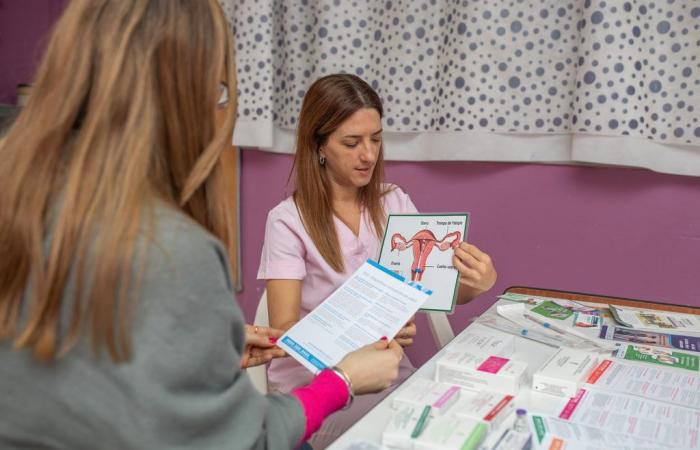Through sexual and reproductive health counseling, women and people with the capacity to conceive have access after childbirth, cesarean section or abortion to short- to long-term contraceptive methods before discharge. The San Roque de Paraná hospital provides this space for meeting, active listening and information.
The immediate post-obstetric event contraception (Aipeo) It is a strategy that has been implemented for a long time and that represents a very valuable opportunity in terms of health. It allows reducing unintentional pregnancies as well as the short interpregnancy period (time between the last pregnancy and the next), maternal morbidity and mortality and unsafe abortions.
With clear, precise information and with a rights and gender perspective, adolescents, women and people with the capacity to become pregnant have access – under their consent – to the contraceptive method they want and that adapts to their social and economic situation.
The Graduate in Obstetrics and member of the Joint Discharge strategy of the San Roque Maternal and Child Hospital (HMISR), Valeria Plugoboy, explained the strategy: “We have managed to ensure that all women and people with the capacity to become pregnant go through counseling, and those If you want, choose a method, because it is not an imposition but a choice. This is a golden opportunity since in our country practically 100 percent of births are institutional, and women are hospitalized for an average of 48 hours, so it is important to take advantage of that opportunity to provide information.”
In 2023, the HMISR recorded 2,204 births (vaginal and cesarean sections) and 295 inpatient abortions. These instances gave rise to counseling spaces where more than 95 percent of women received information on post-obstetric event contraception. Of that total, 53.5 chose hormonal methods (pills, implants, and injectables).
It should be noted that the condom is included in the preventive delivery along with emergency contraception.
For its part, the second most common method chosen by users is tubal ligation (27.8 percent). This reflects the preference for a permanent method among a significant portion of the population and the greater access to this option in recent years (2020 to date).
Meanwhile, the intrauterine device (IUD) represents only 1.44 percent, data that shows a lower preference for this method despite its high effectiveness.
Regarding the power of the counseling space, Plugoboy expressed: “It is a time for active listening to people – whether with their partners, accompanied or alone – where there is a dialogue of knowledge, not only the need for contraceptive method, but rather ideas, beliefs, knowledge, preferences, possibilities are taken into account, and all these issues are lodged in the conversation.
At the same time, the councils have been working hard with people with disabilities. Regarding this, Plugoboy expressed: “It is essential to implement reasonable adjustments and offer support to guarantee that they can make informed and autonomous decisions, like the rest of the population.”
From the HMISR, the patient is provided with methods for at least three to six months, which also takes into account her context, the socio-economic barriers she may have and her situation of vulnerability.
However, Plugoboy pointed out that once the person is discharged, the health centers are the ones that continue to provide contraceptive methods.
After being consulted about the age ranges of people who access Aipeo, the professional indicated that in general age is not a determining factor but recalled that from the age of 13, adolescents can consent to all contraceptive methods that do not involve any risk. for life or health. “And from the age of 16, with the modifications in the Civil and Commercial Code, they can even make the decision to have a tubal ligation or a vasectomy,” she added.
With the data provided, it is possible to note that hormonal methods (pill, implant, injectables) are widely used, reflecting a considerable preference for short- to long-term methods. Meanwhile, tubal ligation is also significantly chosen. Despite the high rate of condom use, this is partly due to their inclusion in preventive strategies alongside emergency contraception and other hormonal methods. Therefore, contraceptive care falls mainly on women or people with the capacity to conceive (PCG).
Finally, the challenges that arise are to further promote sexual and reproductive health counseling spaces in other meeting points (prenatal consultation, vaccination, waiting rooms and other consultations), access to the IUD, and acceptance of condoms as prevention strategy combined with other methods, and generate opportunities for access to vasectomy for those men who wish to do so, taking into account the growing interest and demand perceived.


